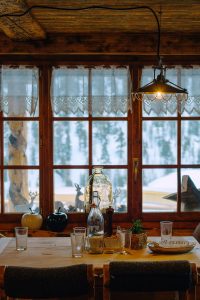Have you thought about installing wooden windows in your home but are hesitant due to potential issues? You may have spoken with a few historic window sash replacement businesses, but all you heard about were the benefits of wood windows. It’s crucial to be informed about both the advantages and disadvantages of each type of window before making the decision to replace your windows.
In this blog, we’ll discuss the main issues that could arise with wooden windows, such as rotting, weather damage, and pest infestation. In order to address these issues, it is also crucial to discuss the price of maintenance and historic window sash replacement as well as what goes into their maintenance. This is not meant to discourage you in any way from selecting wooden windows, but it is crucial for any homeowner considering wooden windows to be aware of and knowledgeable about these potential issues.
Whether you have had wooden windows for 30 years or are considering switching, it’s reasonable for you to have concerns, no matter how lovely a new window may seem. Here, we’ll list the issues in order of most to least likely.
Historic Window Sash Replacement: Things You Should Look Out For
1. Wood that has rotted
The most frequent issue you could experience with wooden windows, or anything else made of wood, is rotting. Wooden windows can last for many years, but they can still rot since the older the wood gets, the more likely it is that it will become prone to rotting. Wood rots or decays when fungus flourish because of dampness in the wood. The ideal conditions for the growth of fungi are created by the persistent dampness and warm temperature. When checking your windows for rot, there are three basic forms of rotting in wood that you can spot.
- Brown rot, commonly known as “dry rot,” destroys the cellulose-containing interior wood fibers. The wood seems chalky and dry, which makes it split and break into pieces with ease.
- White rot, by its name, white rot in wood is known to leave behind white spots where the wood has become infected. It might also seem yellow or grey. Lignin, a polymer that is crucial to the wood’s ability to transport nutrients and water, is destroyed by white rot.
- The least frequent type of rotting is soft rot. It takes a lot longer to penetrate and decompose the wood, but it weakens it and gives the wood a honeycomb-like appearance. Although it is feasible, this rot is most frequently observed in fallen trees and logs in the wild rather than in homes.
Wood rots naturally over time. Regularly checking your windows for cracks or seal failure around the glass are preventative measures you may take. Additionally, keep an eye out for the physical indications for each of the three types of wood rot. Mold can grow in untreated wood rot, which can be unhealthy for the home’s occupants and lead to health issues. Call a reputable window repair or historic window sash replacement company to have the wooden frame of your windows replaced or the entire window replaced if you see decay in the wood.
2. Impact of Weather on Wooden Windows
The weather and environment can also affect how your house expands and contracts and how your windows work, just to how moisture and warmth induce rotting in wood that would require you to have a historic window sash replacement. Your home will grow during warmer months and contract during cooler months over its lifetime. This is typical behavior in any home. Your wooden windows may suffer from cracks in the wood and surrounding caulk due to the continual expansion and contraction. More moisture can enter the wood through this cracking, which may lead to decay. As a result of the caulk’s splitting and subsequent seal failure, your windows won’t be as effective at keeping your home insulated.
Wooden windows may seem sticky or difficult to open when it’s more humid outside. If you are unable to open your windows in an emergency or, on the other hand, close your windows fully for security, this could pose a safety risk. It can be worthwhile to spend money on a dehumidifier for your room if you live in a region where it is humid for more than half the year. A dehumidifier will assist in removing some condensation from the space and improve the window’s usability. If you observe that your window had been affected by weather changes make sure to contact a historic window sash replacement company to aid your window.
3. Termite or Ant Infestation Perhaps
Although a potential termite infestation with wooden windows might be one of your biggest worries, this issue is not very frequent. It is typical in other open and natural parts of your house, though, such basements and wooden siding. Making sure your windows are properly sealed and that the seal endures is the best preventative measure you can take against potential termite or ant colonization. Spraying any kind of pesticide on wooden windows is not recommended since it could compromise the structural integrity of the wood. Make sure to contact a historic window sash replacement company when you see termites eating wooden windows.

GET HISTORIC WINDOW SASH REPLACMENT AND SASH WINDOWS REPAIRS SYDNEY RIGHT NOW!
Every historic window on a building has a unique history, and at Heritage Window Specialists, we cherish that history and are dedicated to preserving it, restoring it to its former splendor, and giving it a fresh new look with timber windows Sydney. Sydney replacement timber window restoration is the company’s main focus, and they offer unparalleled services.
CONTACT US!

